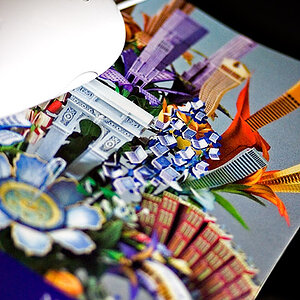sabbath999
No longer a newbie, moving up!
- Joined
- Apr 11, 2007
- Messages
- 2,701
- Reaction score
- 71
- Location
- Missouri
- Can others edit my Photos
- Photos OK to edit
I don't know why you would want to be that far away for sports shooting. The pro line Sony 300mm 2.8 (450mm equivalent at 35mm) would certainly do the job in most situations. The Sony G lens zoom from 70mm to 300mm certainly is good for cross country activities.
Tilt shift is great for shooting buildings close-up with a wide angle but not everyone has the need or the interest in that kind of shooting. DX0 software certainly solves the problem for those that do occasional work in that area and don't want to spend a lot of money on a tilt-shift lens.
You also did not mention the Minolta lenses made during their relationship with Leica or the Tokina zoom lenses 70mm to 400mm (to 600mm 35mm equivalent) which fit the Maxxum and Sony Alpha line.
The handholdable 500mm Minolta (750mm 35mm equivalent) at f. 8 is a one of a kind that is being used considerably in nature photography in Africa.
I don't think you have really looked carefully at what is available for the Sony Alpha cameras.
Tegan
You want to be that far away for auto racing, boat racing, auto racing, surfing pictures, baseball, football (shooting tight), etc. Pro sports shooters use 400's and 500's all the time.
No, I didn't mention the out of production minolta lenses... nor did I mention the VAST collection of out of production Nikon and Canon lenses. This is a forum, not an encyclopedia of the history of lenses.
As far as the f/8 500... you go right ahead. I've seen one. Knock yourself out, I wouldn't put one of those things on my camera.
I do not know of ANYBODY who would say that the Sony and out-of-production Minolta pro lenses are, as a line, superior to the Nikkor system of lenses, when considering selection, image quality, build quality and availability of both new and used lenses... and Canon is at least as good as Nikon in its lens family as well.
I am sure the few pro lenses that Sony puts out are actually quite excellent.



![[No title]](/data/xfmg/thumbnail/42/42057-1509913128bb1db2bc11235c05832fd4.jpg?1619739993)
![[No title]](/data/xfmg/thumbnail/33/33341-3a6934b6cdb015b5acf31087acdcd278.jpg?1619735910)
![[No title]](/data/xfmg/thumbnail/42/42054-e8278f89f6a543cad8fd644e37b064f3.jpg?1619739992)

![[No title]](/data/xfmg/thumbnail/33/33343-857a08c1327857172779bfe49f06f638.jpg?1619735911)


![[No title]](/data/xfmg/thumbnail/42/42056-76026251cb5ebb85b4a4d281d36121d8.jpg?1619739992)


